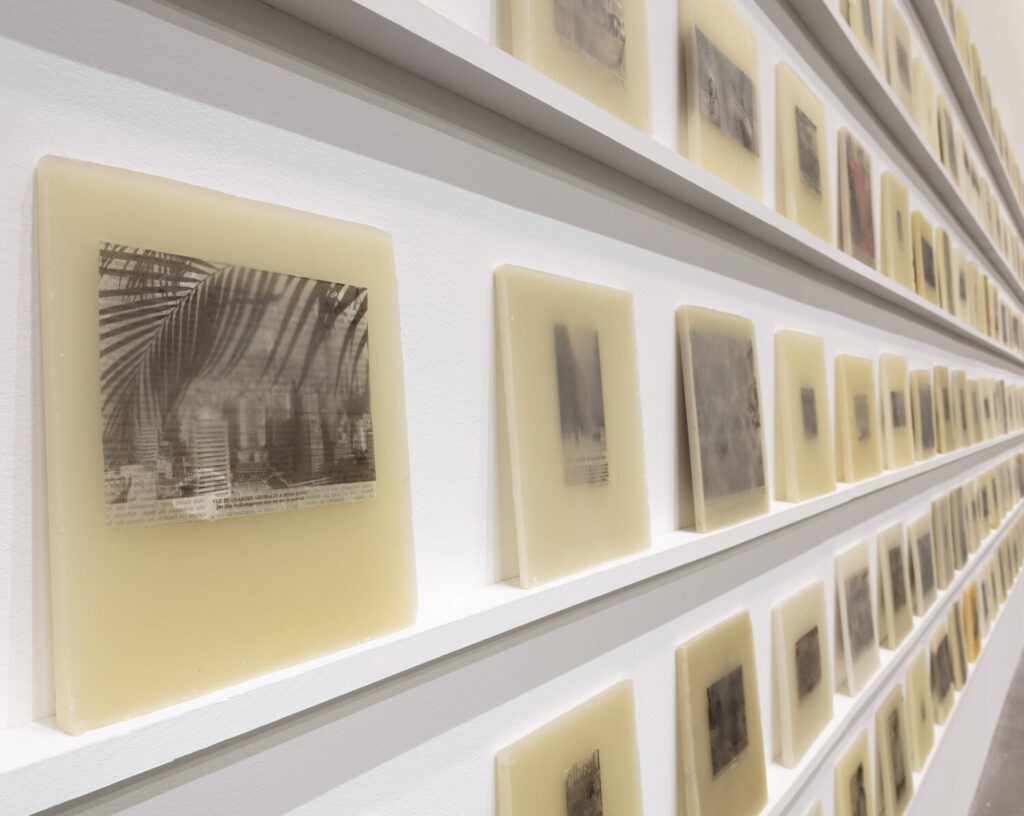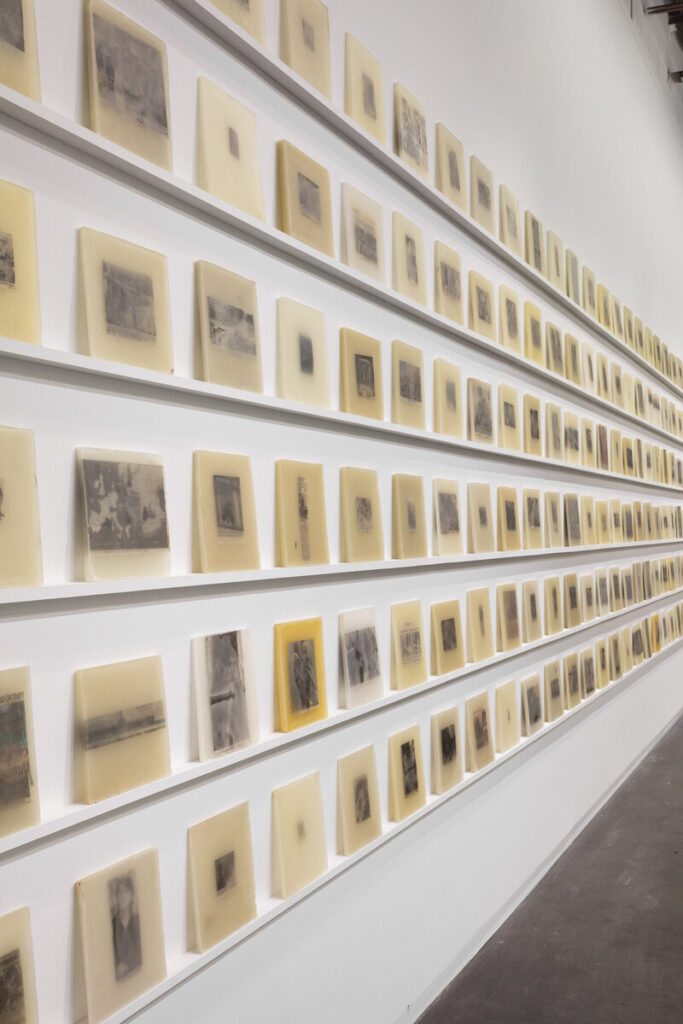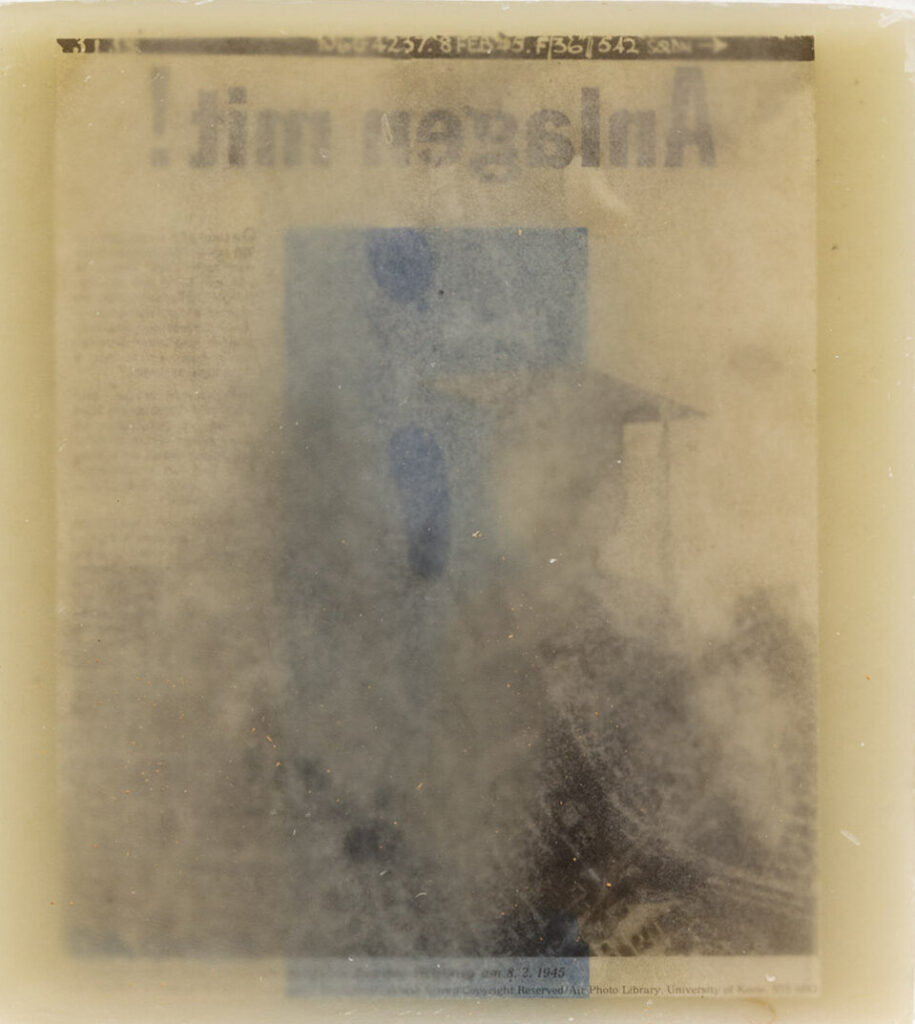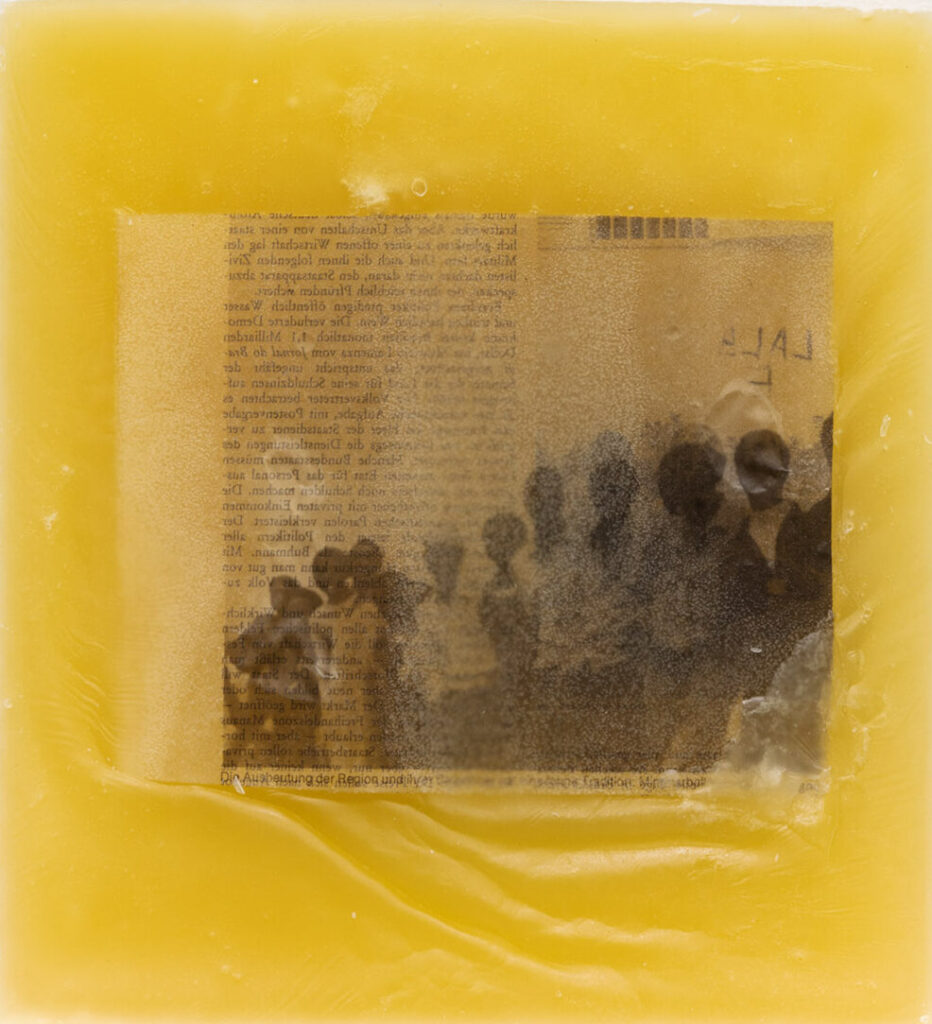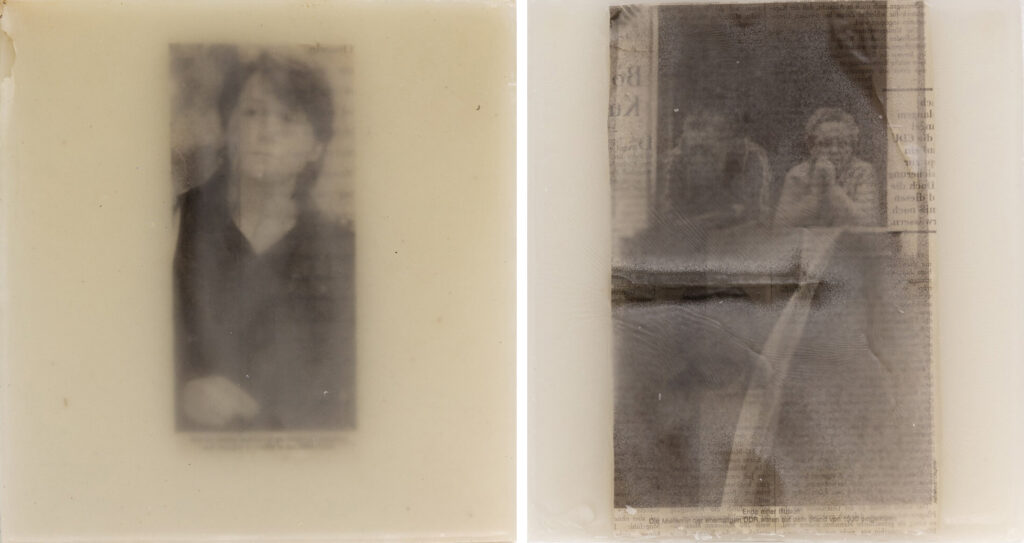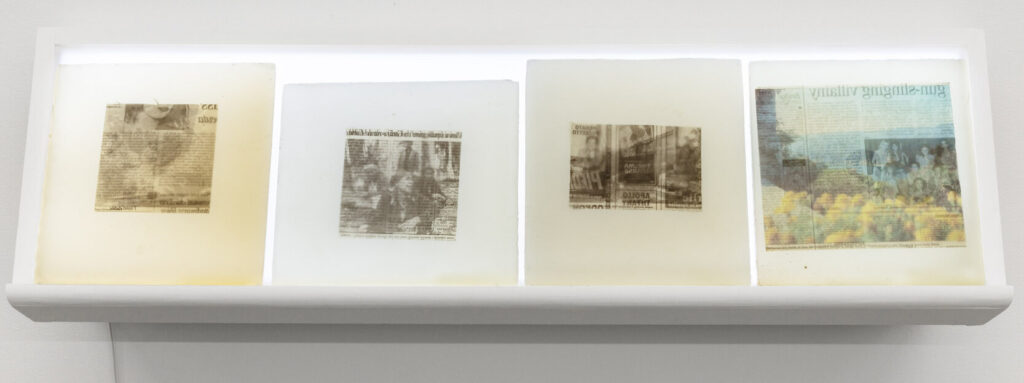Archiving is sterile work, with its goal typically being to isolate objects from people’s hands and from other agents of deterioration, encapsulating them in pristine conditions such as plastic sleeves and glass cases and assigned a place in a strict organizational system. These methods preserve physical materials but can also create barriers between people and artifacts, inhibiting viewer interactions with the physical past. Having worked as an archival technician myself, the way that Iris Häussler archives materials peaks my interest as it opens up alternative methods of recording tangible history.
Installation view of Iris Häussler, Archivio Milano 1991, at Daniel Faria Gallery
According to Daniel Faria Gallery, Häussler’s wax inclusion project started in 1991. The project was initiated when Häussler was invited to be part of the festival Milano Poesia in Milano, Italy where she turned a former industrial building into a studio. For the project she purchased newspapers from around the world and cut out reports of news items that would typically be deemed unimportant and not worth remembering, along with accounts of natural disasters and politics. She then cut out and encased these articles in wax tablets made from used votive candles. It’s important to note that she used the wax from old votive candles as these works seem to act as a recognition and commemoration of the individuals and events that are encased, respecting their memory.
Installation view of Iris Häussler, Archivio Milano 1991, at Daniel Faria Gallery
Häussler continued this encapsulation process, reaching nearly 500 tablets which were stored on metal shelves in chronological order. Daniel Faria Gallery states that this chronological order of accumulating tablets marks the unfolding of time around the world and the process-driven, temporal nature of the project. Initially, visitors could watch Häussler work and could examine the tablets by pulling them from the shelves and holding them up to the light to try and read the articles underneath with more clarity. The highly interactive aspect of this project meant that the tablets that were taken and returned to the shelves were rearranged until any order was unrecognizable. The result of this mingling by visitors is that the articles from all over the world become entwined, creating one collective story.
Installation view of Iris Häussler, Archivio Milano 1991, at Daniel Faria Gallery
Archivio Milano 1991 at Daniel Faria Gallery is made up of just over 200 of these wax tablets which are mainly propped up in rows on tiny ledges along a stark white wall. To see this in the gallery space, it seems you would need to crane your neck to peak at the top rows, with an overwhelming number of tablets looming over you. With the way that the tablets are set up it would be impossible to carefully examine each of the tablets, especially those that are higher up. Daniel Faria Gallery explains that their display is non-hierarchal and does not give more emphasis to any one of the tablets with, “birthdays and deaths coinciding with earthquakes and wars”. Viewers of this archive are seeing both personal and collective histories, without individual stories being prioritized over large-scale events.
Installation view of Iris Häussler, Archivio Milano 1991, at Daniel Faria Gallery
Installation view of Iris Häussler, Archivio Milano 1991, at Daniel Faria Gallery
Daniel Faria Gallery describes the quality of the wax covered clippings as being, “unstable as memories”. Looking closely at the encased clippings, faces are blurred and any text is often overlaid or inverted. It makes sense that viewers would hold these to the light as the tablets are layered with details that are inhibited by wax.
Installation view of Iris Häussler, Archivio Milano 1991, at Daniel Faria Gallery
Sinking newspaper articles into wax changes the quality of their preservation drastically. In a video conversation between Häussler and June Clarke held by Daniel Faria Gallery, Häussler stated, “When I look at these wax works, I think that there is a play with preciseness and opaqueness. Because when you immerse something in wax and it slowly, slowly goes down and you watch it, it’s exactly the different process than making a photograph where you look into the liquid and the photo becomes clear. When you dip something in wax it becomes opaque and it disappears almost. And I think that this has a relation to my experience of the past”. In the virtual walkthrough of the exhibit, Häussler describes the work as exhibiting the process of forgetting while also giving the freedom to reconstruct memory.
Installation view of Iris Häussler, Archivio Milano 1991, at Daniel Faria Gallery
Though the initial display of these tablets was accessible for handling, these tablets are untouchable as this exhibition is solely online. This format does not allow viewers to interact with the works directly and I feel a loss for not being able to hold these tablets up to the light. This is still an intriguing and atypical archive. Rather than being a far-removed encapsulation of history, these tablets embody what it’s like for people to recall history through memories. The articles are blurred and milky, clearer in some sections and almost unidentifiable in others. The quality of the articles disappears into the ghostly yellow and off-white wax, as if those documented moments come in and out of existence.

Installation view of Iris Häussler, Archivio Milano 1991, at Daniel Faria Gallery
Olivia Musselwhite
Images are courtesy of Daniel Faria Gallery
*Exhibition information: Iris Häussler: Archivio Milano 1991, April 10 – May 22, 2021, Daniel Faria Gallery, 188 St Helens Ave, Toronto. View the exhibition online


